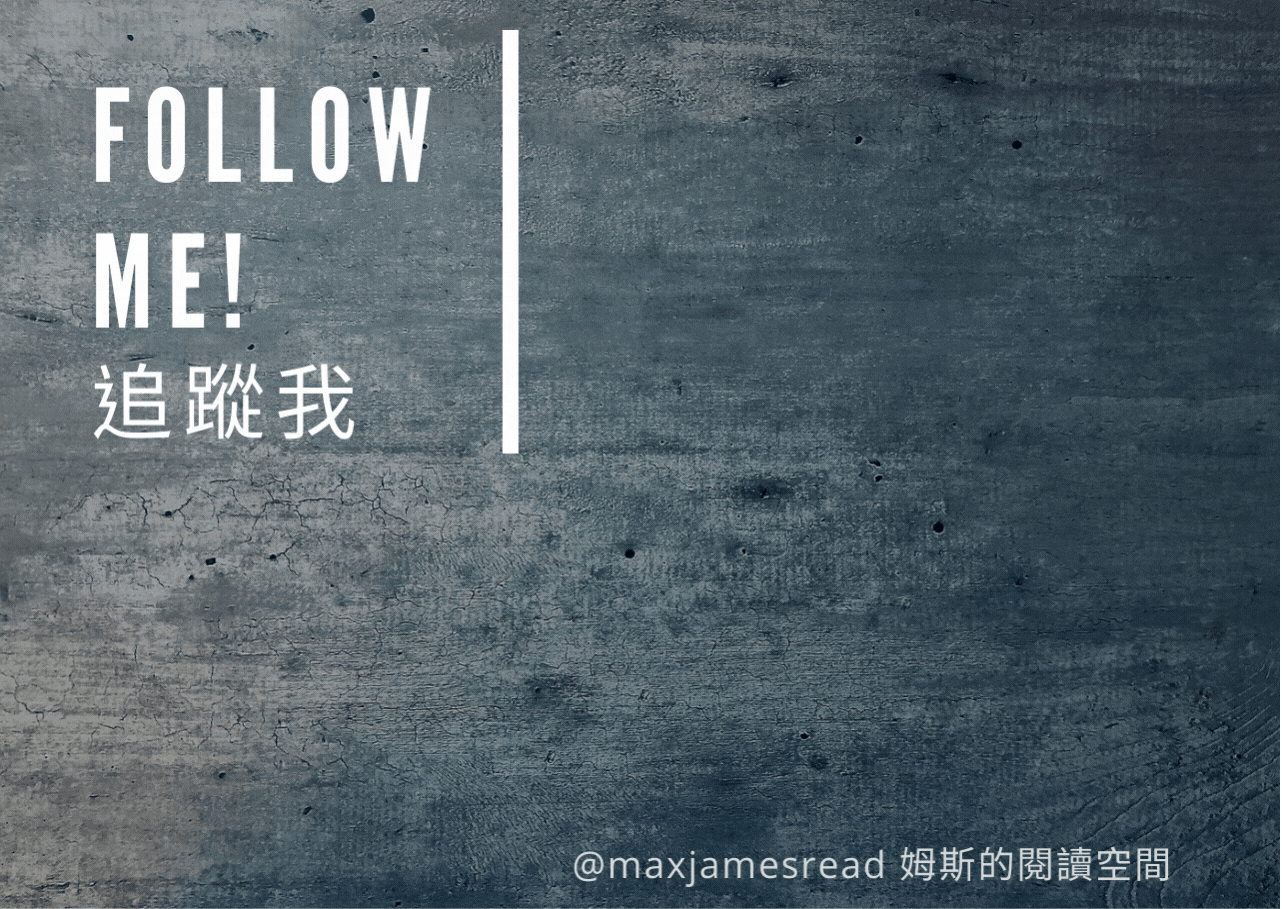
半導體外商的小小螺絲釘,遊走於廢青與社畜之間。熱愛閱讀,喜歡透過書本探索外在、內化自我。希望藉由書寫打開與世界交流的一扇窗。 個人部落格:https://maxjamesread.com/
"11 Writing Lessons for Adults": A Complete Guide to Writing by Chinese We-Media Masters!

Do you want to start writing? Recently, the rapid expansion of online writing, whether it is Square, Matters or personal blogs, a large number of creators have devoted themselves to writing. If you also want to write something, but don't know how to start, the book "11 Writing Lessons for Adults" recommended today is definitely a book you should not miss.
The author Porridge Zuo Luo is a well-known Chinese writing lecturer who has written over 100 explosive articles with over 100,000 views. He used to only receive a monthly salary of 2,300 yuan, but he accidentally started writing as a small editor. After that, he first became a new media lecturer with an annual salary of RMB 500,000, and then he started his own business and founded the self-media "Porridge Zuo Luo".
And this book is to unify the essence of his writing over the years, with 11 chapters, hand in hand to take you from scratch to the road of writing. Below, I will first talk about why I want to write, and then introduce this book from three aspects: writing preparation, writing methods, and writing optimization.
【Why Write: Three Benefits】
There are many reasons why you should start writing. For example , "Ladder Writing" says that writing is a powerful tool for sorting out self-thinking, or "Writing is the best self-investment" believes that writing is the social currency of the traffic generation, etc. These are extremely tempting propositions. And on this issue, I think Congee Zuo Luo's insights are also quite incisive, and I have sorted out the following three points to share with you:
[1. Capability Amplifier]
First and foremost writing is a tool for magnifying power. As Congee Zuo Luo said, you have a skill and whether others know you have this skill are two different things. Writing is a tool that can effectively expand your reach, so that your abilities can be seen by more people.
This is especially true now that the Internet is developed. As long as you post your article PO on the Internet, it may be seen by thousands of people. Such a traffic bonus was unimaginable in the past.
(2. Repeated sales of your own time)
The second benefit of writing is the ability to repeatedly sell your time. Generally speaking, we all need to give our personal time in exchange for compensation, as is the case with ordinary office workers. And a person has 24 hours a day, no matter how hard you work, you can't exceed this time.
But writing is different. You only need to spend one time writing, and your work can be seen by many people again and again. Science and Technology Island Read once called this model leverage , and an article can leverage the vast number of readers and create value-for-money influence.
[3. Value preservation]
The third advantage of writing is that it preserves value. The times are changing rapidly, and many of the past work modes have faded, but as long as humans have the need to read, the ability to write will always be just needed. Once you start accumulating writing skills, you can enjoy compounding interest and build barriers that are difficult for others to jump over.
Everyone needs to learn to write, and writing ability is a basic ability to manage life.
- "11 Writing Lessons for Adults"

[1. Before writing: Reader power]
Before writing, I would like to talk about the "reader awareness" that writers absolutely must have. When writing an article, it is not just your one-way output, but also how the reader feels when inputting. After all, there are so many good articles on the Internet, no one has to read your stuff. As long as he wants, he can say goodbye to the page with one click, and give back your hard work.
How to do it? Congee Zoro suggests that you can pay attention to the following 2 points:
- Adopt an equal and sharing tone <br class="smart">No matter what the article is, it must be written in a sharing tone, and there should be no sense of superiority.
- Invite readers to participate <br class="smart">If your article is passively received by readers, it is bound to be difficult to resonate. Therefore, when writing, you should constantly arouse the enthusiasm of the reader and let him think with you. For example, throwing questions to readers from time to time is a good practice.
Simply put, it is to put readers at ease and use their perspective to conceive the writing content. With this prepositional mindset, the receiver lets us move on to the writing part.
Only when the author has no sense of superiority in IQ can he create a sense of pleasure for readers.
- "11 Writing Lessons for Adults"

[2. When writing: Structural force]
What I think is extremely powerful in this book is that Porridge Zoro provides a fairly specific mode of operation on how to write. Just like assembling Lego, first disassemble each writing block, analyze how to design the stack, and finally put all the blocks together to make a good article. Below I will share insights from the book on four common areas of the article:
[1. Title]
Congee Zuoruo said that when he writes any article, he writes the title first, and then the content. why? Because the title is the theme of writing, it provides you with anchor points and makes the article follow, so that you will not detour and lose focus when you write.
In addition, the title is also the first impression of the article, which determines whether readers will want to click on it. So what kind of title attracts attention? Congee Zuoruo believes that a powerful title can make readers have the urge to "physiologically want to read", so he developed five cores for thinking about the title:
- Curiosity <br class="smart">Everyone is a curious baby. There will be an urge to know about the unknown and novel.
Example: "Nine points of praise, nine points, I watched this film on my knees" - Approval <br class="smart">If the title makes the reader feel like "I think so too", then the chances of him clicking on it are much higher, because everyone has a desire to be recognized.
Example: "Professionalism is the best counterattack weapon in life" - Crisis <br class="smart">Survival is a fundamental human need. Therefore, titles that can trigger a sense of crisis will also be tempting to click.
Example: "The Eve of the Great Layoffs" - Return value <br class="smart">Everyone has limited time and only wants to see useful and rewarding content. If your title can hit his needs, then the click will come naturally.
Example: "After reading these seven articles, an annual salary of one million is just a small goal" - News Spots <br class="smart">People need to be concerned about the dynamics and news around them in order to have topics with others. If the title can tick this point, it will make people swipe away.
Example: "Jack Ma's latest speech: The real strong man is the one who still perseveres when he is most isolated and helpless"
The title is a university question, and to be honest I'm still learning. You can use the suggestions above to figure it out for yourself.
(two, small standard)
With the theme, the outline of the article is then listed, and the steel skeleton of the content is built. And these outlines are also useful, that is, they can be used directly as subtitles.
The subtitles designed with the outline can show the structure and context of the article. In the era of scarcity of attention, it is extremely difficult for readers to read your document, and the small mark is a powerful tool that can lead readers to finish your article step by step.
In addition to making it easier for readers to read, small signs can also act as road signs to guide you in the direction of your writing. As long as you establish the direction of the article first, then follow these signs, and gradually enrich the content of each block, you can safely move towards the end of the article.
(three, the beginning)
A good title can entice readers to click on impulse; a good beginning can entice readers to continue reading. You can master the following 2 skills:
- Stimulate curiosity <br class="smart">It's like asking a question that the reader can't help thinking about, or telling a subversive point of view, which induces the reader's desire to read.
- Demonstrate importance and value <br class="smart">For example, by pointing out the reader's possible pain points at the beginning, or summarizing and refining the content of the article. Make readers feel that this article has to slide down.
(four, the end)
Congee Zoro's thoughts on the ending are very interesting. He believes that the most important thing about the ending is to make people willing to share. This is a feature of writing in the Internet age. Only through readers sharing and spreading, can your articles be seen by more people and maximize their value.
There are 3 techniques you can use to write a good ending:
- Create Empathy <br class="smart">If you want to create empathy, using golden sentences is a great way. In addition to arousing great empathy among readers, another advantage is that readers can directly use these words to share, killing two birds with one stone.
- Reinforcing value <br class="smart">This practice can deepen the reader's impression of the article again. Things like reiterating the importance of the content of the article, or summarizing the main points for the reader are good ways to do this.
- Creating Topics <br class="smart">In the age of community, topics are valuable social currency. Therefore, if the ending can provide a topic, it will be more likely to stimulate the willingness to share. You can emphasize the point of view at the end of the article to trigger discussion, or use the question at the end to strengthen the reader's sense of participation, all of which can be tried.
After following the above four points, you can roughly write a well-organized work. Next, we'll go a step further and add style to the article.

[3. After writing: trimming power]
After the first draft is written, you have to fine-tune it to make it more refined. How to do it? It's very simple, just add and subtract.
[1. Addition]
A good article can make readers feel that they have learned a lot. Therefore, the first thing to do after writing is to use addition to increase the content of the article. What to add? You can start from the following 4 aspects:
- Fill in the information that should not be omitted <br class="smart">Some content or nouns are not familiar to readers. If you do not explain clearly, the reading experience will be poor. For example, I mentioned in "The Road to Life" that the author Yang Siyi is a well-known KOL in Taiwan. But then my friend said that she didn't understand what KOL meant, and I realized that this needs to be explained, so I quickly added it in the text.
- Detailed Existing Information <br class="smart">Some of the content you may only start, and then step down, but readers want to know more carefully. So don't omit what should be explained clearly, and don't spoil the reader's interest.
- Increase argument orientation <br class="smart">If you can provide more evidence on a topic than others, the quality will naturally be better. For example, in "Thinking and Solution of the 1111 Discount War: Why I Still Think It's Necessary for Independent Bookstores to Exist!" 〉 Proposes three points to discuss the reasons for the decline and the possible solutions. For many articles on the relative network, many are complete.
- Increase the number of arguments <br class="smart">The last thing that can be added is arguments. The more examples you have, the better the reader will know what you mean. Each method, like my 30 Time Management Puzzles , provides its own operational paradigm.
[2. Subtraction]
The addition method can increase the gold content of the article, and the subtraction method can increase the density of the article, allowing readers to get the maximum benefit per unit reading time. Can be deleted for the following 3 parts:
- Delete irrelevant content <br class="smart">The content of the article should go around the topic. If it has nothing to do with the theme, even if you like this paragraph, you still have to delete it. When I write, I often write a satisfactory paragraph, but reluctantly remove it because it does not fit the main axis, and most of the results are good!
- Optimizing Repeated Expressions <br class="smart">Articles are most taboo and verbose, so there is no need to mention repeated points; homogeneous cases don’t need to be listed all the time. It's good to say it once.
- Simplify every sentence <br class="smart">The last step is to scrutinize every sentence. In the first draft, it is inevitable that there are many redundant words, such as many "de" and "le", which can actually be omitted. There are many examples in the book, which you can refer to yourself. To put it simply, if it still reads fluently without these words, then boldly delete it.
The secret to good writing is getting every sentence clean.
- "11 Writing Lessons for Adults"

【Summarize】
in conclusion. First of all, you must have the reader's thinking before writing the article; when writing, you can complete the first draft through four steps, including subtitles, building subscripts, constructing the beginning and building the end; finally, the content is detailed by addition and subtraction.
The book outlines and points out every detail of the writing, and provides a lot of examples. And these methods can be seen repeatedly in the content, which can be said to prove their worth by themselves. This article mentions only a small part of the content, and it is highly recommended that anyone who wants to learn to write read this book.
If I were to compare this book with the writing books I've pushed before, I would say this: "Writing is the Best Self-Investment" can help you strengthen your writing mindset and keep you writing; "11 Writing Lessons for Adults" " can help you build the skills you should have in writing, allowing you to produce stable output; while "Ladder Writing" can strengthen your writing and make the articles better read.
In fact, every time I write this kind of writing book, I feel very apprehensive. I am afraid that my writing is poor, and I will not recommend it and become a burden. But as I said at the beginning, writing is about sharing. These books have helped me a lot in my writing journey, so I'll try my best to introduce them to you. If the content is a little helpful to those who want to write, then it's worth it!

↓↓You are also welcome to follow the Facebook and mourning of "Mrs's Reading Space"↓↓
James' reading space FB
James' reading space IG
Like my work?
Don't forget to support or like, so I know you are with me..
Comment…